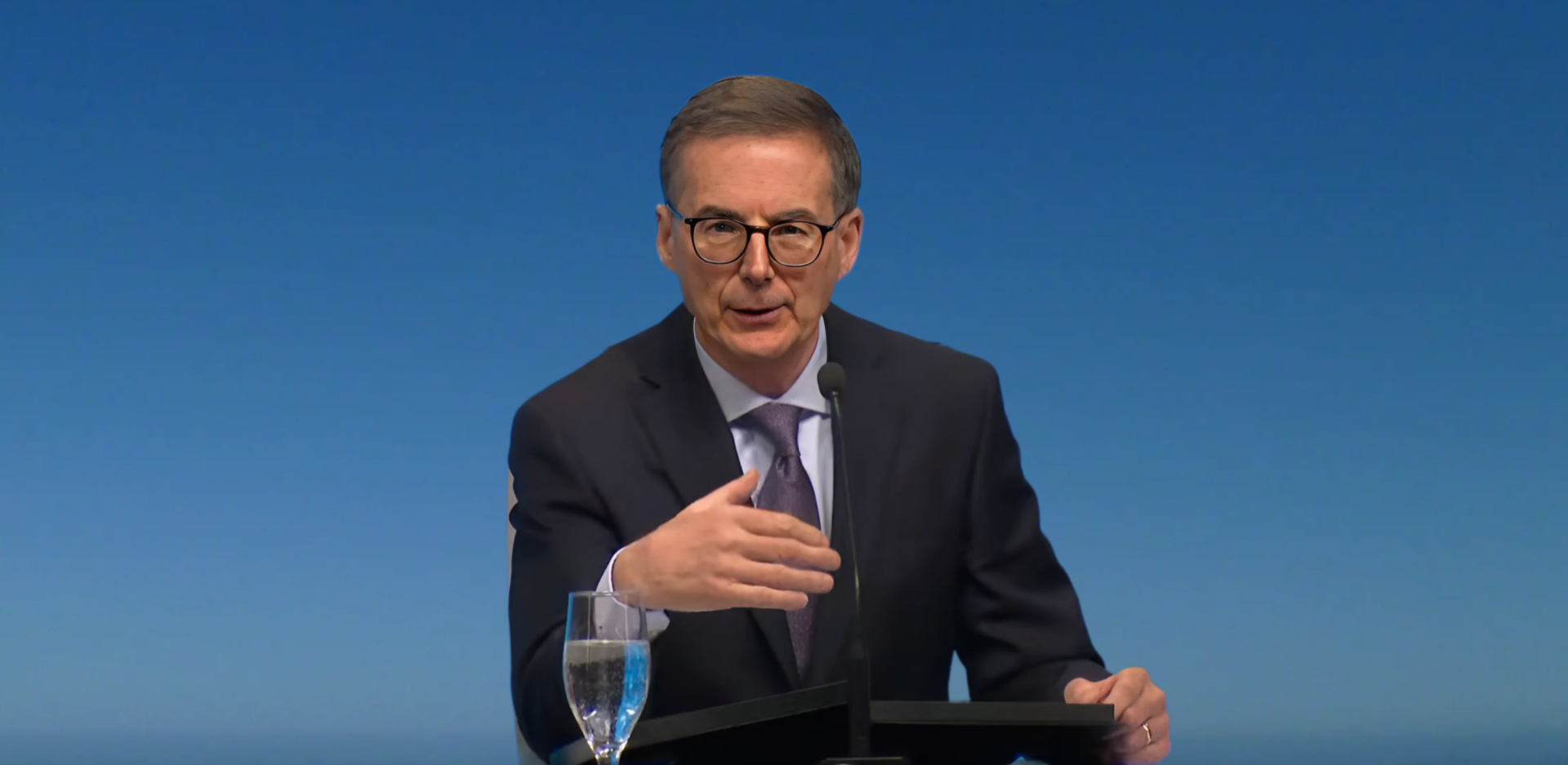Bank of Canada Governor Tiff Macklem faced the media today, following the central bank’s decision to lower its key interest rate by 25 basis points to 4.25 per cent, the third consecutive reduction this year. The move comes amid signs of both economic strength and potential weakness, creating a complex environment for the central bank’s monetary policy.
Macklem highlighted the conflicting forces currently influencing inflation in Canada. While overall economic weakness is putting downward pressure on prices, particularly in shelter and other services, these areas continue to exert upward pressure on inflation. “Inflation continues to reflect the push and pull of opposing forces,” Macklem said, noting that recent indicators suggest some easing in shelter costs and other services since the last Monetary Policy Report (MPR) in July.
He also acknowledged that while inflation has eased to 2.5% as of July, the core inflation remains a concern. The Bank expects inflation to continue its downward trajectory, though it may experience a slight uptick later in the year due to the unwinding of base effects. “If inflation continues to ease broadly in line with our July forecast, it is reasonable to expect further cuts in our policy interest rate,” Macklem stated.
Macklem provided an update on the economy, reporting that the Canadian economy grew by 2.1% in the second quarter of 2024, driven by government spending and business investment. This growth, stronger than the 1.5% projected in the July MPR, follows a 1.8% growth rate in the first quarter. However, the Governor was cautious, noting that recent data indicates a slowdown in economic activity through June and July, with employment growth stalling and the unemployment rate rising to 6.4%.
“The rise in unemployment is concentrated in youth and newcomers to Canada who are finding it more difficult to get a job,” Macklem said. While business layoffs remain moderate, weak hiring has contributed to an increase in labour market slack, which could, in turn, slow wage growth—a key factor in controlling inflation.
The press conference moved to a Q&A session, where reporters questioned the Bank’s strategy in opting for a 25-basis-point cut instead of a more aggressive 50-point reduction. Macklem explained that while inflation remains above the Bank’s 2% target, it is on a downward trend, and the decision for a more measured cut reflects the need to balance risks. “We started cutting in June. This is our third consecutive decrease. Inflation is still above our target… at this point, 25 basis points looked appropriate,” he said.
When asked about the potential impact of U.S. Federal Reserve policies on Canada, particularly with the Fed expected to announce its own rate cut, Macklem emphasized that the Bank of Canada’s decisions are made independently in the best interest of Canadians. “We take monetary policy decisions in Canada in the best interest of Canadians. We have our own inflation target, we have a flexible exchange rate, so interest rates between Canada and the United States can diverge,” he asserted.
Looking ahead, Macklem reiterated the Bank’s commitment to bringing inflation back to the 2% target, while also guarding against the risk of inflation falling too far below this level. He acknowledged the potential upside risks, particularly the possibility that shelter price inflation could remain elevated or even strengthen, making it challenging to reach the inflation target. However, he also pointed to downside risks, such as the economy weakening more than expected, which could push inflation below the target.
“We are determined to get inflation down to the 2% target and we want it to stay there,” Macklem said, underscoring the Bank’s focus on maintaining price stability for Canadians.
With the economy showing signs of both resilience and potential vulnerability, the path forward for the Bank of Canada remains one of careful deliberation and strategic decision-making. The next few months will be critical as the Bank navigates these challenges to maintain economic stability and achieve its inflation target.

